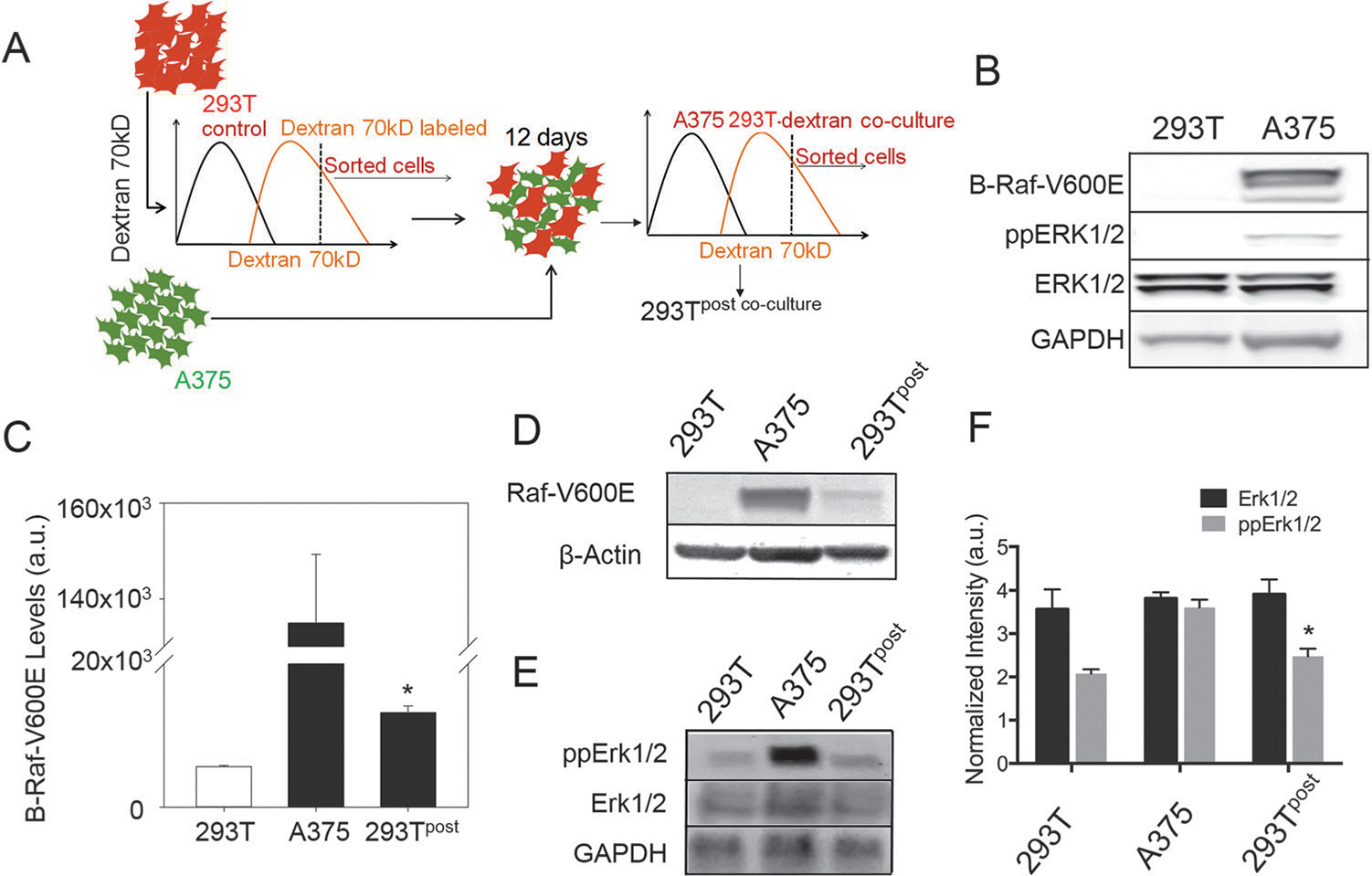Fig. 4.

Signaling molecules can transfer between cells influencing cell phenotypes. (A) Schematic showing the experimental plan. A cell type is labeled with a high molecular weight dextran (that does not get transferred in significant amount to preserve cell type-specific labeling), and mixed with the donor cell type. Cells are co-cultured for 12 days, and sorted by dextran labeling using fluorescence assisted cell sorting (FACS), and probed for the transfer of proteins from the donor cells. (B) Immunoblot images showing that A375 cells were positive for BRAF point mutated at locus 600 with valine substituted for glutamic acid, and had increased Erk1/2 phosphorylation; the lower lane shows abundance of GAPDH as the control. (C) Quantitative immunoblot analysis of control 293T cells and sorted 293T cells after co-culture shows that a very small, but significant amount of constitutively active BRAF (V600E) gets transferred from A375 to 293T cells; *, P < 0.05 shows the standard error of mean between the 293T cells before and after co-culture, n = 3 for independent co-culture experiments. (D) The immunoblot image of 293T, A375, and FACS sorted 293T cells after co-culture with A375 shows transfer of BRAF-V600E in 293T cells; the lower lane shows abundance of β-actin as the control. (E) The immunoblot image of control 293T cells and sorted 293T cells after co-culture shows an increase in Erk1/2 phosphorylation in sorted cells; the lower lane shows abundance of GAPDH as the control. (F) Immunoblot quantification for E showing relative abundance of Erk1/2 and phospho-Erk1/2 in A375, 293T, and sorted 293T cells after co-culture with A375; *, P < 0.05 shows standard error of mean between the 293T cells before and after co-culture, n = 3 for independent co-culture experiments.
